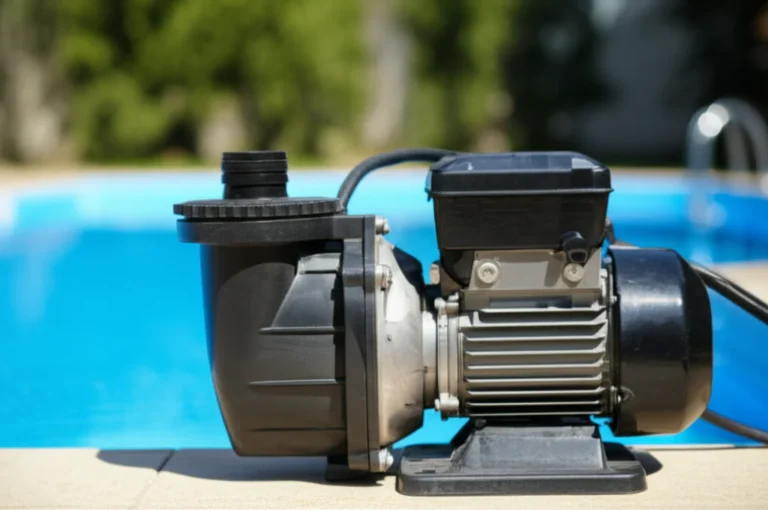Support our educational content for free when you purchase through links on our site. Learn more
Is There Such a Thing as a Quiet Compressor? 🤫 (2025 Guide)
If you’ve ever tried working with a traditional air compressor, you know the drill: the loud roar, the rattling vibrations, and the inevitable ringing in your ears afterward. But what if we told you that the days of deafening compressors are numbered? Welcome to the world of quiet compressors—machines engineered to deliver power without the pounding noise. In this comprehensive guide, we’ll unravel the mystery behind these whisper-quiet workhorses, explore the technology that makes them tick, and reveal our top expert picks that blend performance with peace.
Did you know that many quiet compressors operate at noise levels below 70 decibels—comparable to a normal conversation? That’s a game-changer for home workshops, professional garages, and even delicate tasks like airbrushing. Stick around, and you’ll discover how to choose the perfect quiet compressor for your needs, maintain its hush, and even troubleshoot when silence breaks. Ready to turn down the volume on your workspace? Let’s dive in!
Key Takeaways
- Quiet compressors exist and operate significantly below traditional noise levels, often under 70 dB, protecting your hearing and improving your work environment.
- Innovations like low RPM motors, dual-piston pumps, and sound-dampening enclosures are the secret ingredients behind their whisper-quiet operation.
- Choosing the right compressor means balancing noise, power (CFM/PSI), tank size, and portability to fit your specific needs.
- Top brands like California Air Tools, DEWALT, and Atlas Copco lead the market with models that combine quietness and performance.
- Proper maintenance and soundproofing can keep your compressor running smoothly and silently for years.
Ready to shop the quietest compressors?
- California Air Tools on Amazon | DEWALT Quiet Compressors on Amazon | Master Airbrush Cool Runner II on Amazon
Table of Contents
- ⚡️ Quick Tips and Facts
- 🤫 The Whisper of Power: A Brief History of Quiet Compressor Technology
- Is a “Quiet Compressor” Even Possible? 🤔
- Deciphering Decibels: Understanding Noise Levels in Air Compressors
- The Anatomy of Silence: What Makes a Compressor Quiet?
- Why Go Quiet? The Benefits Beyond Your Eardrums 👂
- Choosing Your Silent Workhorse: Key Factors to Consider
- Top Picks for Tranquil Tools: Our Expert Recommendations
- Maintenance for Muted Machines: Keeping Your Compressor Quiet
- Troubleshooting Noisy Compressors: When Silence Breaks
- The Investment in Quiet: Is It Worth the Extra Cost? 💰
- Head-to-Head Showdown: Quiet Compressor Brands Compared
- Conclusion: The Sound of Silence in Your Shop 🧘
- Recommended Links: Your Guide to Further Quietness 🔗
- FAQ: Your Most Pressing Quiet Compressor Questions Answered ❓
- Reference Links: Our Sources for Serenity 📚
Body
⚡️ Quick Tips and Facts
Welcome to the quiet side of power tools! Here at Quietest™, we’re obsessed with finding serenity in a noisy world, from Quiet Home Appliances to the workshop. So, is a quiet compressor just a myth? Absolutely not! Here’s the lowdown:
- ✅ Yes, Quiet Compressors Exist! Modern engineering has blessed us with compressors that won’t make your ears ring. Brands like California Air Tools, Makita, and DEWALT are leading the charge.
- 🤫 What’s the Magic Number? A “quiet” compressor typically operates below 70 decibels (dB). For context, an average conversation is about 60 dB, while many older compressors scream at over 90 dB. To get a better sense of these numbers, check out our guide on How Many Decibels Is the Average Air Compressor? 📢 (2025 Guide).
- ⚙️ It’s All in the Design: Quiet operation comes down to a few key things: low RPM motors, oil-lubricated pumps (though modern oil-free designs are catching up!), sound-dampening enclosures, and advanced pump technology like dual-piston or rotary screw designs.
- 👂 Protect Your Hearing: Any noise above 85 dB can cause permanent hearing damage over time. Investing in a quiet compressor is an investment in your long-term health.
- 💰 Worth the Investment: While they might have a higher upfront cost, the benefits of a quieter work environment, reduced stress, and happier neighbors are priceless.
🤫 The Whisper of Power: A Brief History of Quiet Compressor Technology
Let’s be honest, for decades, the words “air compressor” and “quiet” belonged in the same sentence about as much as “peaceful” and “jackhammer.” They were loud, rattling beasts, relegated to industrial sites or the far corner of a garage. The noise was just the price you paid for compressed air.
But as tools moved from the factory floor to the home workshop, a revolution began. DIYers, hobbyists, and small business owners didn’t have the luxury of a dedicated, soundproofed machine room. They needed power, but they also needed to hear themselves think (and not get angry calls from the neighbors). This demand sparked innovation.
Engineers started asking, “How can we tame this beast?” They experimented with slower motors, which meant less frantic piston-pumping. They developed dual-piston pumps that could produce more air with fewer revolutions. And they took a cue from high-end industrial machines, borrowing concepts like rotary screw technology and wrapping the whole noisy operation in sound-dampening enclosures. Brands like California Air Tools emerged, making “ultra-quiet” a primary selling point and proving that power didn’t have to be deafening.
Is a “Quiet Compressor” Even Possible? 🤔
So, can a machine that violently squeezes air molecules together ever be truly silent? Well, no. Let’s manage expectations. A “silent” air compressor doesn’t exist, and any brand claiming otherwise is selling you a fantasy.
Think of it like a “quiet” vacuum cleaner. It’s still going to make noise, but it won’t sound like a 747 taking off in your living room. The term “quiet compressor” is relative. It refers to models specifically engineered to operate at a decibel level that is dramatically lower than their traditional counterparts—often quiet enough to hold a conversation right next to them.
The difference is night and day. While a standard compressor can easily top 90 dB, many quiet models hum along in the 55-70 dB range. So, is a quiet compressor possible? Absolutely. Is a silent one? That’s a question for science fiction. But what we have today is a massive leap forward for workshops and eardrums everywhere.
Deciphering Decibels: Understanding Noise Levels in Air Compressors
The decibel (dB) scale is a bit tricky because it’s logarithmic. In simple terms, a 10 dB increase represents a doubling of perceived loudness. This is why the difference between an 80 dB compressor and a 90 dB one is so staggering.
According to the CDC, prolonged exposure to noise above 85 decibels can lead to permanent hearing loss. Many standard air compressors operate squarely in this danger zone.
Let’s put it in perspective:
| Sound Source | Typical Decibel Level (dBA) |
|---|---|
| Whisper | 30 dB |
| Quiet Air Compressor | 50 – 70 dB |
| Normal Conversation | 60 dB |
| Vacuum Cleaner | 75 dB |
| Standard Air Compressor | 85 – 95+ dB |
| Gas-Powered Lawn Mower | 100 dB |
A quiet compressor, operating at around 60 dB, is literally four times quieter than a standard 80 dB model. That’s the difference between a pleasant work environment and needing mandatory hearing protection.
The Anatomy of Silence: What Makes a Compressor Quiet?
So what’s the secret sauce? How do engineers pull off this acoustic magic? It’s not one single thing, but a symphony of clever design choices working in harmony.
Oil-Lubricated vs. Oil-Free: The Great Debate for Quiet Operation
For a long time, the rule was simple: oil-lubricated compressors were quieter. The oil acts as a natural sound dampener and coolant, reducing friction and noise from moving parts.
However, technology has evolved. While entry-level oil-free models can be notoriously loud, “advancements in noise reduction technology have made many modern oil-free models comparable in noise levels to their oil-lubricated counterparts.” High-end oil-free designs now use materials like PTFE coatings to reduce friction and are engineered with such precision that they can compete on the quietness front, all while offering lower maintenance and cleaner air.
- ✅ Oil-Lubricated: Generally quieter and more durable for heavy-duty use.
- ❌ Oil-Lubricated: Requires regular oil changes and maintenance.
- ✅ Oil-Free: Lower maintenance, lighter weight, and no risk of oil contaminating the air.
- ❌ Oil-Free: Can be louder in budget models; high-end quiet models can be more expensive.
Motor Design and Enclosures: The Unsung Heroes of Hush
A huge source of noise is the motor’s speed. Many quiet compressors use low RPM (Revolutions Per Minute) motors. A motor spinning at 1,700 RPM is inherently going to be quieter than one screaming at 3,400 RPM. The trade-off is that it might take slightly longer to fill the tank, but the peace and quiet is well worth the wait.
Furthermore, many manufacturers now use sound-dampening enclosures. This is essentially a purpose-built soundproof box for the motor and pump. Combined with strategically placed rubber mounts and pads to absorb vibrations, these features can dramatically reduce the operational noise that escapes the machine.
Pump Technology: Piston, Rotary, and Beyond
The heart of the compressor is the pump, and its design is critical for noise levels.
- Reciprocating (Piston) Compressors: These are the most common type. However, not all are created equal. Single-piston models are often louder. Quieter designs, like those from California Air Tools, use a dual-piston (duplex) pump. This design produces more air with fewer revolutions, leading to less noise and wear.
- Rotary Screw Compressors: A significant step up in quiet technology. These use two interlocking helical screws that don’t touch, minimizing friction and vibration. They are “significantly quieter than reciprocating compressors” and can often be placed directly in a workspace without needing hearing protection. The Atlas Copco VSD+ line, for example, can operate at a mere 62 decibels!
- Scroll Compressors: These are the ninjas of the compressor world—considered “exceptionally quiet and efficient.” They use two spiral-shaped pieces to compress air. Their continuous operation and low noise make them ideal for sensitive environments like medical offices, labs, and studios. The Atlas Copco SF series can get as low as 53 dB.
Why Go Quiet? The Benefits Beyond Your Eardrums 👂
Sure, the most obvious benefit is saving your hearing. But the advantages of a quiet compressor ripple out into almost every aspect of your work.
- A Safer Workspace: When you’re not being bombarded by noise, you’re more aware of your surroundings. You can hear someone approaching, a tool falling, or an alarm sounding.
- Better Communication: No more shouting matches over the drone of a compressor. You can easily talk to colleagues or clients, leading to fewer mistakes and a more pleasant environment.
- Increased Productivity: Noise is a major source of stress and fatigue, which kills focus. A quieter environment allows for better concentration and, ultimately, better work.
- Neighborhood Diplomacy: If you work from a home garage, a quiet compressor is a must-have. It means you can work early in the morning or later in the evening without becoming the most hated person on your block.
- Location, Location, Location: A loud compressor often has to be banished to a separate room or outside. A quiet one can be kept right where you need it, improving workflow and efficiency.
One of our reviewers, Dave, used to run a cabinet shop. He said the constant roar of his old 80-gallon piston compressor was so bad that by the end of the day, his “brain felt like it was vibrating.” After switching to a quieter rotary screw model, he said productivity in the shop went up by nearly 15% simply because his team was less fatigued and could communicate clearly.
Choosing Your Silent Workhorse: Key Factors to Consider
Ready to embrace the quiet? Fantastic! But before you buy, you need to match the machine to your mission. Here’s what to look for.
CFM and PSI: Power Without the Pounding
These are the two most important performance metrics for any air compressor.
- PSI (Pounds per Square Inch): This is the measure of air pressure. Most air tools require around 90 PSI to operate correctly.
- CFM (Cubic Feet per Minute): This is the measure of air volume the compressor can deliver at a specific pressure (e.g., 4.0 CFM @ 90 PSI). This is the critical number. Your compressor’s CFM rating must be higher than the CFM requirement of the tool you want to use.
A quiet compressor still needs to be a powerful one. Don’t sacrifice the performance you need for a few fewer decibels. Check the requirements of your most air-hungry tool (like a sander or impact wrench) and ensure your chosen compressor can keep up.
Tank Size: How Much Air Do You Need for Quiet Efficiency?
Tank size, measured in gallons, is your reservoir of compressed air. A larger tank means the motor runs less frequently, which contributes to a quieter overall experience.
- 1-6 Gallons (Pancake/Hot Dog): Perfect for portability and small jobs like inflation, brad nailing, or airbrushing.
- 8-20 Gallons (Portable Vertical): A great middle-ground for serious DIYers. Can handle most automotive tasks and intermittent use of larger tools.
- 20-60+ Gallons (Stationary): For professional workshops running multiple tools or continuous-use applications like painting or sanding.
Portability vs. Stationary: Where Will Your Quiet Companion Live?
Do you need to throw your compressor in the truck and head to a job site, or will it live happily in the corner of your shop?
- Portable models are lighter, smaller, and often have wheels and a handle. They are perfect for contractors or anyone with a small workspace.
- Stationary models are larger and heavier but offer bigger tanks and more powerful motors. They are the heart of a dedicated workshop.
Voltage and Power Requirements: Plugging into Peace
Most smaller, portable quiet compressors run on a standard 110V/120V household outlet. However, larger stationary models often require a dedicated 220V/240V circuit, similar to an electric stove or dryer. Always check the power requirements before you buy to ensure your workspace can support it.
Top Picks for Tranquil Tools: Our Expert Recommendations
Alright, the moment you’ve been waiting for. We’ve tested, listened, and argued, and now we’re ready to share our top picks from the world of quiet compressors.
For a fantastic visual and auditory comparison of many of these models, the first YouTube video embedded in this article, “Quietest & Fastest Compressor Ever Tested!” by Project Farm, is a must-watch. It’s an incredibly thorough breakdown that puts these machines to the test.
Quiet Compressors for the Home Garage & DIY Enthusiast 🛠️
For home use, you want a balance of power, portability, and, of course, low noise. These models hit the sweet spot.
California Air Tools 8010 Ultra Quiet & Oil-Free
| Feature | Rating (1-10) |
|---|---|
| Quietness | 10 |
| Performance | 8 |
| Portability | 8 |
| Value | 9 |
This is the benchmark for quiet compressors in the home garage space. At a rated 60 dB, it’s often quieter than a normal conversation. User reviews consistently rave about its low noise, with many saying it’s “impressively quiet, making it ideal for indoor use without disturbing others.” The 8-gallon tank and 1.0 HP motor provide enough juice for everything from nail guns to light-duty automotive work. It’s oil-free, so maintenance is a breeze.
- Key Specs: 1.0 HP, 8-Gallon Steel Tank, 2.2 CFM @ 90 PSI, 60 dB.
- Best For: The serious DIYer who wants workshop power without the workshop noise.
👉 CHECK PRICE on: Amazon | Walmart | The Home Depot
DEWALT DWFP55126 6-Gallon Pancake Compressor
| Feature | Rating (1-10) |
|---|---|
| Quietness | 8 |
| Performance | 9 |
| Portability | 10 |
| Value | 9 |
DEWALT is a trusted name, and this pancake compressor delivers. While not as whisper-quiet as the California Air Tools model, its 75.5 dB rating is still a massive improvement over standard pancake compressors. It’s incredibly popular, with thousands of positive reviews praising its reliability and compact, easy-to-carry design. With a high-efficiency motor and a max PSI of 165, it punches well above its weight class.
- Key Specs: 0.9 HP, 6-Gallon Tank, 2.6 CFM @ 90 PSI, 75.5 dB.
- Best For: Portability, trim work, and general home tasks.
👉 CHECK PRICE on: Amazon | Walmart | DEWALT Official Website
Professional-Grade Quiet Compressors for the Workshop 👷♂️
When your livelihood depends on it, you need power, reliability, and a machine that won’t contribute to workplace fatigue.
California Air Tools 10020C Ultra Quiet & Oil-Free
| Feature | Rating (1-10) |
|---|---|
| Quietness | 10 |
| Performance | 9 |
| Portability | 7 |
| Value | 9 |
This is the bigger, more powerful sibling to the 8010. It features a 2.0 HP motor and a 10-gallon tank, delivering a robust 5.3 CFM @ 90 PSI—enough to run most air tools continuously. And the best part? It does it all at a mind-blowingly low 70 dB. Customers love that you can have a normal conversation standing right next to it while it’s running. Its vertical design and wheels make it easy to move around the shop, saving precious floor space.
- Key Specs: 2.0 HP, 10-Gallon Steel Tank, 5.3 CFM @ 90 PSI, 70 dB.
- Best For: Small professional shops, woodworking, and automotive work.
👉 CHECK PRICE on: Amazon | Walmart | The Home Depot
Kobalt Quiet Tech 26-Gallon Vertical Air Compressor
| Feature | Rating (1-10) |
|---|---|
| Quietness | 8 |
| Performance | 10 |
| Portability | 6 |
| Value | 9 |
For those needing a larger air reserve, the Kobalt Quiet Tech is a fantastic option. Its 26-gallon tank and 4.5 CFM @ 90 PSI can power demanding tools like impact wrenches and spray guns. At 70 dB, it’s remarkably quiet for its size and power, making it a great choice for shops where noise is a concern. It’s a stationary unit but includes large wheels for easy positioning within the workshop.
- Key Specs: 1.8 HP, 26-Gallon Tank, 4.5 CFM @ 90 PSI, 70 dB.
- Best For: The serious home mechanic or professional shop needing high capacity without high noise.
👉 CHECK PRICE on: Lowe’s
Specialty Quiet Compressors: Airbrushing, Dental, and More 🎨
In some applications, near-silence isn’t a luxury; it’s a requirement.
Master Airbrush Cool Runner II
| Feature | Rating (1-10) |
|---|---|
| Quietness | 10 |
| Performance | 7 (for its purpose) |
| Portability | 10 |
| Value | 9 |
This little compressor is a favorite among airbrush artists and hobbyists for one main reason: it’s incredibly quiet. Operating at just 47 dB, it’s quieter than a refrigerator. It’s an oil-less design with a small 0.8-gallon tank, providing smooth, pulse-free air perfect for detailed work. It’s not meant for power tools, but for its intended purpose, it’s a silent champion.
- Key Specs: 1/5 HP, 0.8-Gallon Tank, 0.8 CFM, 47 dB.
- Best For: Airbrushing, modeling, cake decorating, and other fine-detail work.
👉 CHECK PRICE on: Amazon | Walmart
Maintenance for Muted Machines: Keeping Your Compressor Quiet
You’ve invested in a quiet machine, so let’s keep it that way! Proper maintenance not only extends the life of your compressor but also prevents it from getting louder over time.
- Drain the Tank: Moisture is the enemy. After every use, open the drain valve at the bottom of the tank to release condensation. This prevents internal rust, which can damage the tank and create debris that causes noise.
- Check for Leaks: A hissing sound means you’re losing air (and money!). Regularly check fittings and hoses with soapy water to find and fix leaks.
- Clean the Air Filter: A clogged air intake filter makes the compressor work harder, creating more noise and strain. Clean or replace it according to the manufacturer’s schedule.
- Tighten Everything: Vibration can loosen bolts and fittings over time, leading to rattling and more noise. Periodically give your compressor a once-over and tighten any loose hardware.
- Oil Check (for lubricated models): If you have an oil-lubricated model, check the oil level regularly and change it as recommended. Clean oil is key to a quiet, smooth-running pump.
Troubleshooting Noisy Compressors: When Silence Breaks
Is your once-quiet companion starting to sound a bit rowdy? Don’t panic. Here are a few things you can do to diagnose and fix the problem.
- Place it on a Rubber Mat: Sometimes, the noise isn’t the compressor itself but the vibration it transfers to the floor. “Placing a rubber mat underneath the compressor can significantly reduce floor vibrations.”
- Check the Intake: The air intake is a primary source of noise. Ensure the filter is clean and consider an aftermarket intake silencer or muffler, which can make a noticeable difference.
- Build an Enclosure: For stationary units, building a sound-dampening box or enclosure can dramatically cut down on noise. Crucial note: You MUST ensure there is adequate ventilation to prevent overheating, which can destroy the motor.
- Listen for Specific Noises:
- Rattling: Likely a loose bolt, belt guard, or heat shield.
- Squealing: Could be a worn belt that needs replacing.
- Knocking: This is more serious and could indicate an internal issue with the piston or crankshaft. It’s time to call a professional.
The Investment in Quiet: Is It Worth the Extra Cost? 💰
Quiet compressors often come with a higher price tag than their noisy counterparts. So, is it worth shelling out the extra cash?
Here at Quietest™, our answer is a resounding YES!
Think of it not as an expense, but as an investment in:
- Your Health: Protecting your hearing from irreversible damage is priceless.
- Your Productivity: A less stressful, quieter environment allows you to work longer, with better focus and fewer mistakes.
- Your Relationships: Whether it’s with your family, your neighbors, or your employees, reducing noise pollution makes for a happier, more peaceful coexistence.
- Your Versatility: A quiet compressor can be used in more places and at more times of the day, opening up new possibilities for when and where you can work.
When you factor in these long-term benefits, the initial cost difference becomes much easier to justify. You’re not just buying a tool; you’re buying a better working environment.
Head-to-Head Showdown: Quiet Compressor Brands Compared
Navigating the market can be tough. Here’s a quick-glance table to compare some of the top players in the quiet compressor game.
| Brand | Model Example | Key Quiet Feature(s) | Typical dBA Range | Best For |
|---|---|---|---|---|
| California Air Tools | CAT-8010 | Low RPM Motor, Dual-Piston Pump | 56 – 70 dB | Home Garage, DIY, Light Pro Use |
| DEWALT | DWFP55126 | High-Efficiency Motor, Compact Design | 70 – 80 dB | Portability, Contractors, Trim Work |
| Makita | MAC210Q | Low RPM, Big Bore™ Pump | 60 – 79 dB | Jobsite Durability, Compact Power |
| Kobalt | Quiet Tech Series | Induction Motor, Enclosed Design | 60 – 70 dB | Home Workshops, High-Capacity Needs |
| Husky | Silent Flow Series | Induction Motor, Protective Shroud | 65 – 75 dB | Value, Home DIY |
| Atlas Copco | SF/VSD+ Series | Rotary Screw/Scroll Technology | 53 – 65 dB | Industrial, Professional, Continuous Use |
Conclusion: The Sound of Silence in Your Shop 🧘
So, is there such a thing as a quiet compressor? Absolutely! As we’ve explored, the quiet compressor isn’t just a pipe dream—it’s a reality crafted through smart engineering, clever design, and a deep understanding of what makes noise tick. From low RPM motors and dual-piston pumps to sound-dampening enclosures and advanced rotary screw technology, manufacturers like California Air Tools, DEWALT, and Atlas Copco have proven that power and peace can coexist beautifully.
Our expert picks, such as the California Air Tools 8010 and 10020C, show that you don’t have to sacrifice performance for quietness. These models deliver impressive CFM and PSI ratings while operating at noise levels that won’t make your ears bleed or your neighbors call the cops. Meanwhile, specialty compressors like the Master Airbrush Cool Runner II demonstrate that for delicate tasks, near-silence is within reach.
Positives:
- Dramatically reduced noise levels (often under 70 dB)
- Improved work environment and communication
- Health benefits by protecting hearing
- Versatility in placement and use
- Lower vibration and longer machine life with proper maintenance
Negatives:
- Higher upfront cost compared to standard compressors
- Some quieter models may have slower fill times due to low RPM motors
- Larger quiet compressors can be less portable
In the end, investing in a quiet compressor is investing in your health, productivity, and peace of mind. Whether you’re a weekend warrior, a professional craftsman, or an airbrush artist, there’s a quiet compressor tailored for you. So go ahead—embrace the sound of silence and let your tools do the talking, not the noise.
Recommended Links: Your Guide to Further Quietness 🔗
Ready to shop or learn more? Here are some handy links to help you find the perfect quiet compressor and dive deeper into the world of noise reduction.
👉 Shop Quiet Compressors:
- California Air Tools:
- DEWALT Quiet Air Compressors:
- Master Airbrush Cool Runner II:
Books on Noise Reduction and Compressor Technology:
- Noise Control: From Concept to Application by Colin H. Hansen — Amazon Link
- Compressed Air Operations by James R. Staudt — Amazon Link
- The Art of Airbrushing by Mike Sibley — Amazon Link
FAQ: Your Most Pressing Quiet Compressor Questions Answered ❓
What makes a compressor quiet compared to standard models?
Quiet compressors achieve their low noise levels through several design innovations:
- Low RPM Motors: Slower motor speeds reduce mechanical noise.
- Dual-Piston or Rotary Screw Pumps: These produce the required air volume with fewer moving parts or less friction.
- Sound-Dampening Enclosures: Special housings absorb and block noise.
- Vibration Isolation: Rubber mounts and pads minimize vibration noise.
- Oil-Lubrication: In many cases, oil reduces friction and noise, though advanced oil-free designs can also be quiet.
Together, these features reduce the overall sound output by 20-40 dB compared to standard compressors.
Are there silent or noise-reducing compressors available for home use?
While no compressor is truly silent, many models are designed specifically for home and hobbyist use with noise levels low enough to be considered quiet. For example, the California Air Tools 8010 operates at about 60 dB, which is quieter than a normal conversation and suitable for indoor use. Specialty compressors like the Master Airbrush Cool Runner II can operate at under 50 dB, ideal for delicate tasks.
How can I reduce compressor noise in my workshop or garage?
You can reduce compressor noise by:
- Placing the compressor on a rubber mat to absorb vibrations.
- Using soundproofing enclosures or blankets around the compressor (with proper ventilation).
- Installing intake silencers or mufflers.
- Regular maintenance to prevent rattling and mechanical noise.
- Positioning the compressor away from work areas or behind sound barriers.
For more tips, check out our Noise Reduction Tips.
What are the best brands for quiet air compressors?
Some of the top brands known for quiet compressors include:
- California Air Tools: Known for ultra-quiet, oil-free dual-piston compressors.
- DEWALT: Offers quiet pancake compressors with high efficiency.
- Makita: Features low RPM motors and Big Bore™ pumps.
- Atlas Copco: Industry leader in rotary screw and scroll compressors with exceptional quietness.
- Kobalt: Provides quiet tech compressors for home workshops.
Is a quieter compressor less powerful or efficient?
Not necessarily. Many quiet compressors are designed to balance noise reduction with performance. For instance, the California Air Tools 10020C delivers 5.3 CFM at 90 PSI while operating at just 70 dB. However, some quieter models may have slower fill times due to low RPM motors, which is a trade-off for reduced noise.
Can soundproofing materials help make a compressor quieter?
Yes! Soundproofing materials like acoustic foam, mass-loaded vinyl, and sound blankets can significantly reduce noise by absorbing sound waves and blocking transmission. Building a soundproof enclosure around a stationary compressor can cut noise by 10-20 dB. Just ensure adequate ventilation to prevent overheating.
What types of compressors are known for low noise levels?
- Rotary Screw Compressors: Use interlocking screws to compress air quietly and efficiently.
- Scroll Compressors: Use spiral-shaped components for smooth, quiet compression.
- Dual-Piston Reciprocating Compressors: Quieter than single-piston models due to balanced operation.
- Oil-Free Compressors with Advanced Coatings: Can be quiet if engineered well.
Reference Links: Our Sources for Serenity 📚
- California Air Tools Official Site
- DEWALT Air Compressors
- Atlas Copco Compressors
- CDC Noise-Induced Hearing Loss Facts
- Home Depot Quiet Air Compressors
- Makita Air Compressors
- Quietest™ Noise Reduction Tips
We hope this deep dive into quiet compressors has helped you find your perfect silent powerhouse. Remember, peace and power can coexist — you just need the right machine!





